Community Violence Profile:
Eastern North Philadelphia
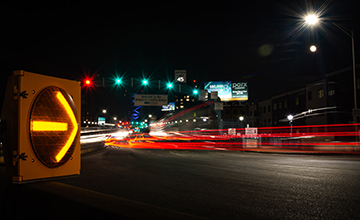
Community Brief
June 2018
Community Violence Profile - Eastern North Philadelphia
In a recent survey, 44 percent of Philadelphia residents stated that public safety is the biggest problem facing the city.1 Eastern North Philadelphia experiences violent crime at a higher rate than the rest of the city. In response to the disproportionate level of violence and the call for community action, Drexel’s Urban Health Collaborative and Congreso de Latinos Unidos, Inc. (Congreso) collaborated to document the violence facing this community and provide resources to the community leaders and organizations working hard to prevent it.
This project included four phases: 1) stakeholder meetings with violence prevention leaders, 2) seeking data to illustrate this problem, 3) structured interviews with community organizations to identify violence prevention resources, and 4) creating a website to make this information accessible to community violence prevention leaders.
What resulted was this community brief and website, Neighborhood United Against Violence. Careful planning and continuous feedback have allowed us to create a useful tool for learning about community resources, empowering advocacy, and educating Philadelphians about the disparities within this community.

Neighborhood United Against Violence is a web-based profile of Eastern North Philadelphia that provides data to illustrate the extent of the issue and existing violence prevention assets and resources. This brief contains a small sample of all the data, assets, and other information available online; visit nuavnow.org for access.
Components of Community Health and Resilience
Violence has increasingly come to be viewed as a community health issue. Research and interventions have often focused on one specific area of violence prevention such as intimate partner violence or gun violence. Research indicates that an individual who is a victim of one type of violence is likely to experience other types of violence as well. Multiple forms of violence also share risk factors and protective factors, such as trauma and stress. Witnessing and experiencing violence disproportionately affects low-income neighborhoods and communities of color.
A leading national violence prevention organization, The Prevention Institute, suggests addressing disparities in violence requires a focus on social factors that make communities vulnerable. Using a framework they developed as a guide, we have organized the information in this profile according to three components:
1. People includes the social and cultural characteristics of the community.
2. Place includes the environment around the community including the presence of vacant or abandoned lots and buildings.
3. Opportunity includes educational and employment opportunities that are available to community members
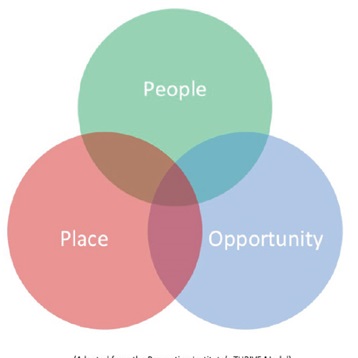
The Issue
In 2014, among the 10 largest U.S. cities, Philadelphia had the highest rate of violent crime per 100,000 residents. The map below shows all of the violent crimes that occurred within the city in 2015. The darkest areas of this map show census tracts where the largest number took place. As seen here, Eastern North Philadelphia experiences more violent crime than other areas of the city. In 2016, two of the police districts in this area were ranked third and fourth in the city for highest violent crime.
Violent Crime includes criminal homicide, aggravated assault, simple assault, rape and robbery.
44% of Philadelphia residents stated that public safety is the biggest problem facing the city.
Census Tract is a group of blocks defined by the U.S. Census that usually consists of residents with similar demographic backgrounds.
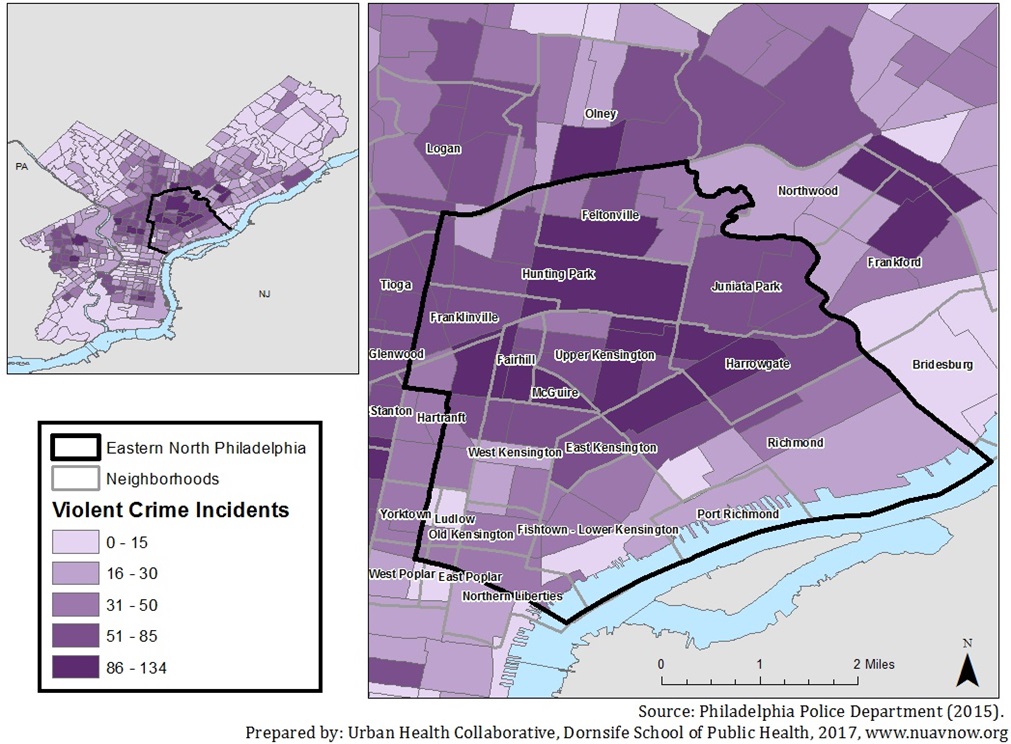
People
Neighborhood factors that may seem unrelated can impact the health and safety of a population. These are sometimes called social determinants of health. For example, the majority of Philadelphia’s Latino population resides in Eastern North Philadelphia; Latinos overall experience higher rates of poverty than any other racial or ethnic group in the city. Poverty is a determinant of both poor health and high crime rates. On the other hand, Eastern North Philadelphia has almost double the citywide average of residents that are bilingual. Being bilingual is an asset, because it makes a job seeker more attractive to a potential employer. Social determinants of health are economic or social factors that influence health. These are the conditions that cause differences, or disparities, in health between different neighborhoods and different groups of people.
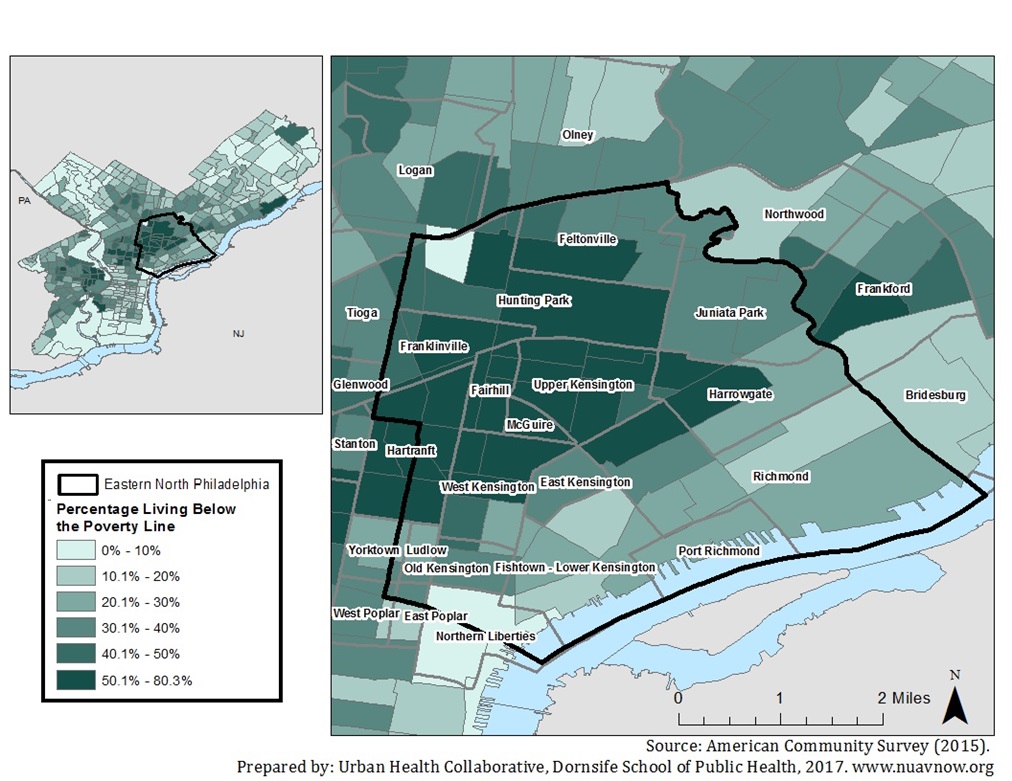
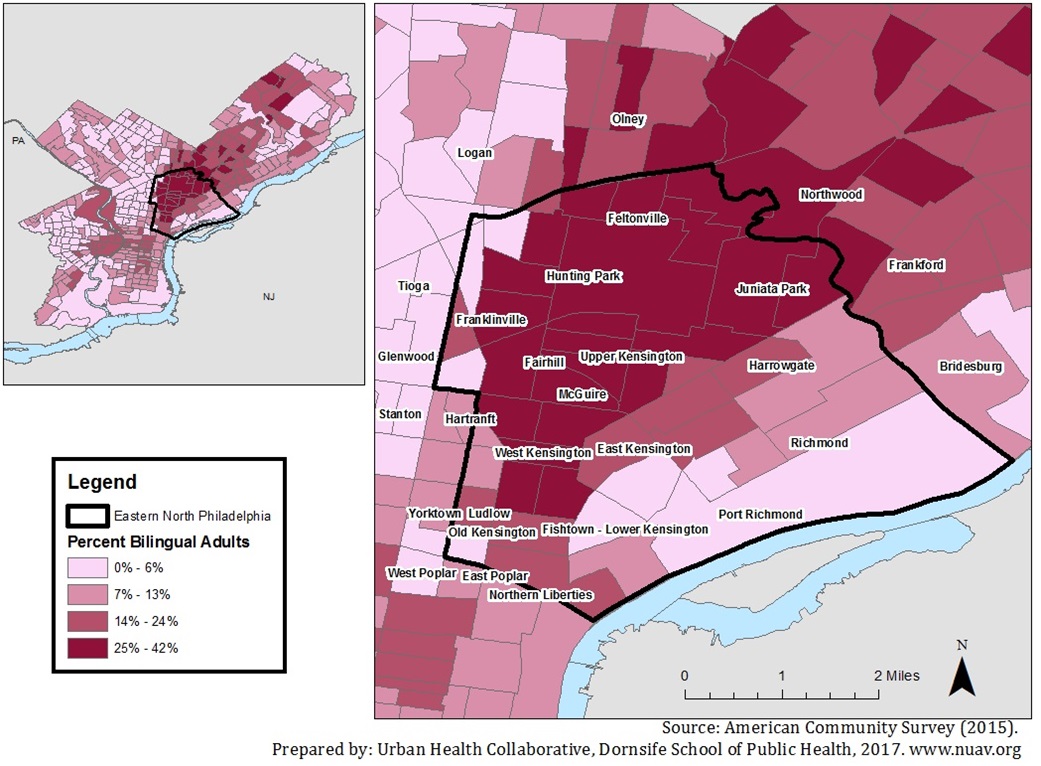
Place
Place and environmental factors have a big impact on health. Resources like safe and affordable housing, parks, recreation areas, and access to transportation in a community can impact the amount of crime that takes places there. Eastern North Philadelphia has fewer green spaces such as public parks and recreation areas than other areas of the city. Green spaces create social environments that promote community as well as feelings of comfort and security. The presence of these spaces has been shown to reduce rates of violence and crime. Another asset that makes a community feel safer is public art. The presence of public art, such as murals, has been shown to promote community empowerment and social capital as well as revitalize community corridors. Eastern North Philadelphia is a community with a large mural presence celebrating its Latino culture.
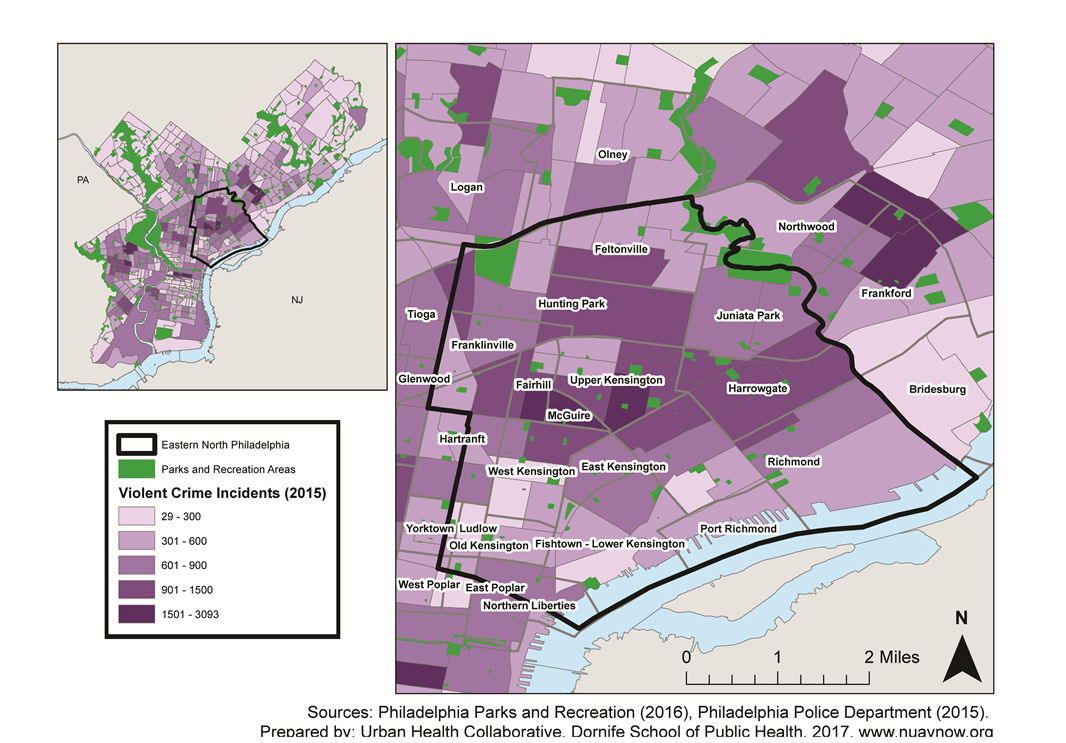
Eastern North Philadelphia is rich with community and faith based organizations and efforts that focus on addressing community needs. Our asset inventory captured upstream and downstream efforts to reduce violence and related consequences.
(Image of: Sembrando Sueños, Cosechando Esperanzas mural dedication. Photo by Steve Weinik.)
Opportunity
Opportunities for employment and educational success vary between different areas of the city, and this can affect the health and well-being of a community. Youth development through programs offered outside of school hours has been shown to engage children in healthy activities that result in positive educational outcomes. Eastern North Philadelphia has a number of providers that serve neighborhood youth. These assets can contribute to the reduction of educational disparities in this community.
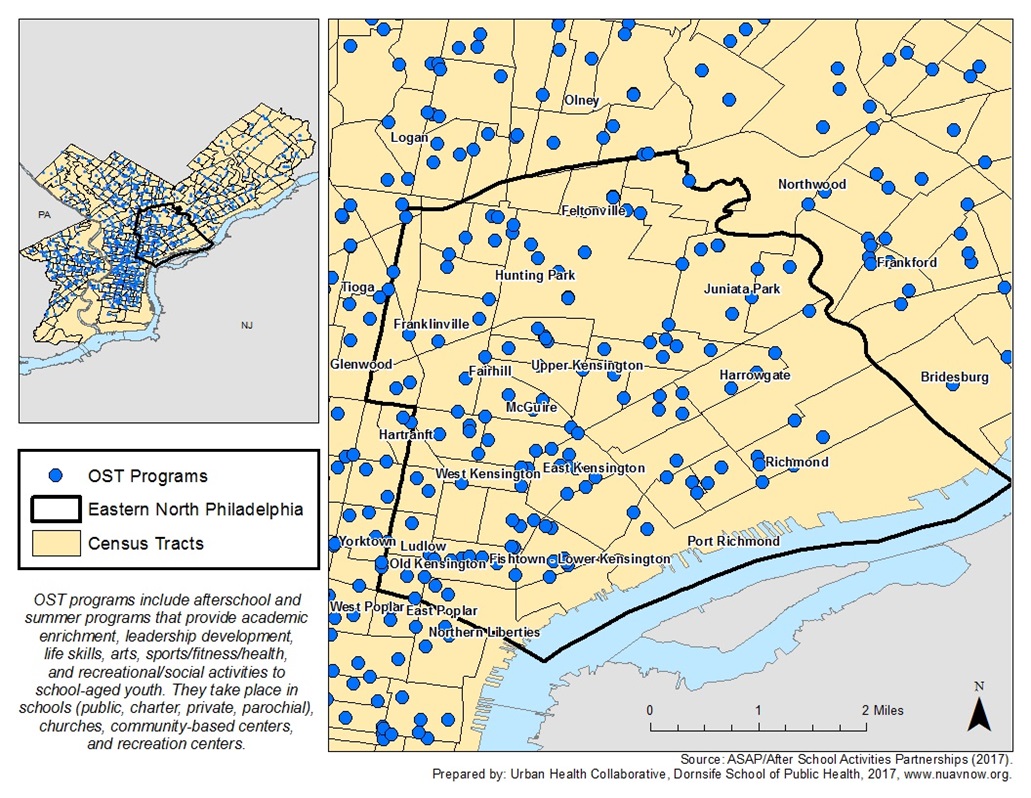
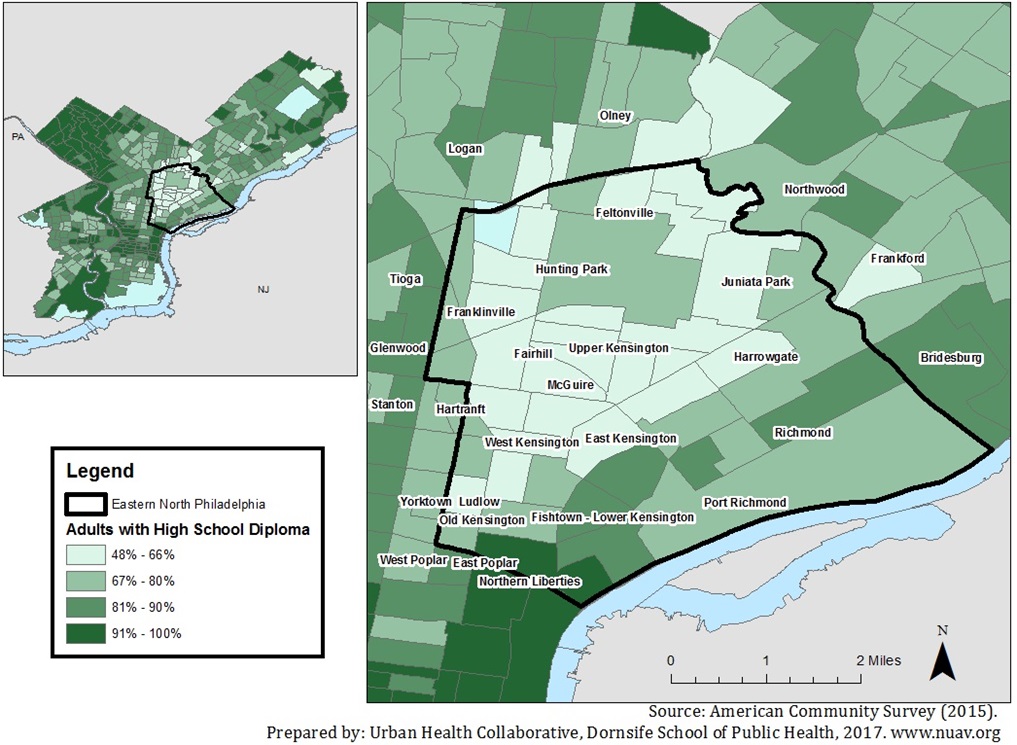
How to Access Community Violence Resources
Within the Assets section of the Neighborhood United Against Violence website, nuavnow.org/assets, there is an inventory of resources located in and around Eastern North Philadelphia that community members and organizations can use in their violence prevention and victim assistance efforts.
Resources available on the website are grouped into eight categories: Case Management and Counseling; Behavioral Health Services; Youth Development; Legal Assistance; HospitalBased Programs; Community Activism; Financial Counseling; and Direct Emergency Services. This resource can be updated easily through community feedback, as needed.
How to Use This Brief
This community brief and website, nuavnow.org, is a compilation of resources for violence prevention organizations to support their work in providing services to community members, securing grant funding, and collaborating with other organizations. This profile was also designed to raise awareness about violence needs in this community among residents, leaders, organizational partners, policymakers and violence stakeholders city-wide. Here are some ways you can use this information:
• Download this brief at nuavnow.org/resources and take copies to your next meeting with funders, policymakers, or other decision-makers.
• All of these and many other maps and graphics are downloadable on our website at nuavnow.org/data. Copy and insert them into your next grant application, advocacy materials, or presentations.
• Download the directory of violence prevention resources at nuavnow.org/ resources. Share these resources with your staff and community members.
References and Other Resources
For more information and a complete list of references, as well as additional resources on this topic, visit Neighborhood United Against Violence at nuavnow.org. For information on the Drexel Urban Health Collaborative, please visit: drexel.edu/uhc
CITATION Joseph S, Gibson B, Nadji A, Sestito S, Carroll-Scott A. Community Violence Profile: Eastern North Philadelphia. Philadelphia, PA: Drexel University Urban Health Collaborative; June 2018